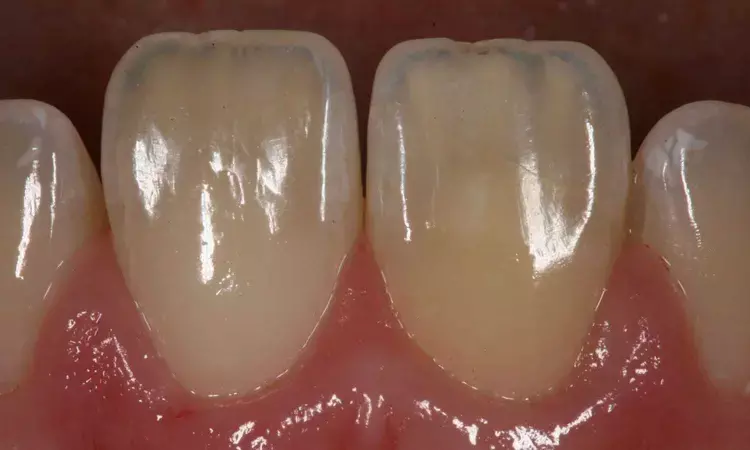- Home
- Medical news & Guidelines
- Anesthesiology
- Cardiology and CTVS
- Critical Care
- Dentistry
- Dermatology
- Diabetes and Endocrinology
- ENT
- Gastroenterology
- Medicine
- Nephrology
- Neurology
- Obstretics-Gynaecology
- Oncology
- Ophthalmology
- Orthopaedics
- Pediatrics-Neonatology
- Psychiatry
- Pulmonology
- Radiology
- Surgery
- Urology
- Laboratory Medicine
- Diet
- Nursing
- Paramedical
- Physiotherapy
- Health news
- Fact Check
- Bone Health Fact Check
- Brain Health Fact Check
- Cancer Related Fact Check
- Child Care Fact Check
- Dental and oral health fact check
- Diabetes and metabolic health fact check
- Diet and Nutrition Fact Check
- Eye and ENT Care Fact Check
- Fitness fact check
- Gut health fact check
- Heart health fact check
- Kidney health fact check
- Medical education fact check
- Men's health fact check
- Respiratory fact check
- Skin and hair care fact check
- Vaccine and Immunization fact check
- Women's health fact check
- AYUSH
- State News
- Andaman and Nicobar Islands
- Andhra Pradesh
- Arunachal Pradesh
- Assam
- Bihar
- Chandigarh
- Chattisgarh
- Dadra and Nagar Haveli
- Daman and Diu
- Delhi
- Goa
- Gujarat
- Haryana
- Himachal Pradesh
- Jammu & Kashmir
- Jharkhand
- Karnataka
- Kerala
- Ladakh
- Lakshadweep
- Madhya Pradesh
- Maharashtra
- Manipur
- Meghalaya
- Mizoram
- Nagaland
- Odisha
- Puducherry
- Punjab
- Rajasthan
- Sikkim
- Tamil Nadu
- Telangana
- Tripura
- Uttar Pradesh
- Uttrakhand
- West Bengal
- Medical Education
- Industry
Background Colour and Coping Thickness Key to Zirconia Veneer Shade Accuracy: Study

Researchers have found in a new study that background colour had the greatest impact on final shade outcomes of zirconia veneers, followed by coping thickness.
Two predictive formulas were developed by them to estimate colour difference values between restorations and target shades (A2 or A3), aiding in accurate color matching for discoloured teeth and improving clinical aesthetic results. By adjusting zirconia thickness, transparency, and luting cement shade based on these formulas and clinical context, clinicians can minimize shade discrepancies and improve aesthetic results.
This study aimed to derive predictive formulas for the final colour of restorations for discoloured teeth using zirconia veneers. Coping thickness and translucency of zirconia, background colour, and luting cement shade were assessed. Shapiro-Wilk, ANOVA, paired t-tests, independent t-tests, Tukey’s test, and Automatic linear modeling (p < 0.05) were employed to develop a clinically practical method for predicting the colour difference (ΔE) between sample combinations (SCs) and the shade guides. ΔE values were evaluated against perceptibility (PT = 2.6) and acceptability (AT = 5.5) thresholds. Results: Most discoloured teeth could be restored for A2 or A3 target shade.
Using 1.5 mm CAD-CAM zirconia ceramic can achieve PT when the background colour is ND5, ND7, ND8. ΔE between the 1.5 mm LT SCs and the A2 shade guide is mostly within the AT range. ΔE between SCs and A2 shade guide showed a positive association with ND9 and negative associations with ND4, ND5, 1.5 mm, 1.0 mm, LT, and BL (p < 0.001). ΔE between SCs and A3 shade guide correlated positively with ND4, ND5, and ND9 but negatively with 1.5 mm, 1.0 mm, and LT (p < 0.001). Each factor differentially influenced the final colour, with background colour being the most significant, followed by coping thickness.
Two formulas can be used to predicted ΔE between the restoration for discoloured teeth using zirconia veneers and the target shade (A2 or A3). The proposed formulas facilitate colour prediction in zirconia veneers for discoloured teeth, enhancing clinical aesthetic outcomes.
Reference:
Yanlin Xia, Jiakang Zhu, Wenxiang Wang, Shanshan Liang, Cui Huang, Colour prediction for restoring discoloured teeth using zirconia veneers, Journal of Dentistry, 2025, 105902, ISSN 0300-5712, https://doi.org/10.1016/j.jdent.2025.105902.
Dr. Shravani Dali has completed her BDS from Pravara institute of medical sciences, loni. Following which she extensively worked in the healthcare sector for 2+ years. She has been actively involved in writing blogs in field of health and wellness. Currently she is pursuing her Masters of public health-health administration from Tata institute of social sciences. She can be contacted at editorial@medicaldialogues.in.
Dr Kamal Kant Kohli-MBBS, DTCD- a chest specialist with more than 30 years of practice and a flair for writing clinical articles, Dr Kamal Kant Kohli joined Medical Dialogues as a Chief Editor of Medical News. Besides writing articles, as an editor, he proofreads and verifies all the medical content published on Medical Dialogues including those coming from journals, studies,medical conferences,guidelines etc. Email: drkohli@medicaldialogues.in. Contact no. 011-43720751


